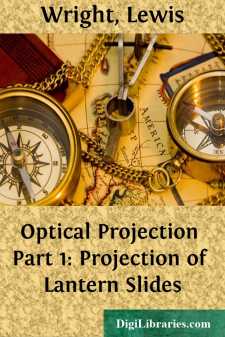Categories
- Antiques & Collectibles 13
- Architecture 36
- Art 48
- Bibles 22
- Biography & Autobiography 813
- Body, Mind & Spirit 142
- Business & Economics 28
- Children's Books 15
- Children's Fiction 12
- Computers 4
- Cooking 94
- Crafts & Hobbies 4
- Drama 346
- Education 46
- Family & Relationships 57
- Fiction 11828
- Games 19
- Gardening 17
- Health & Fitness 34
- History 1377
- House & Home 1
- Humor 147
- Juvenile Fiction 1873
- Juvenile Nonfiction 202
- Language Arts & Disciplines 88
- Law 16
- Literary Collections 686
- Literary Criticism 179
- Mathematics 13
- Medical 41
- Music 40
- Nature 179
- Non-Classifiable 1768
- Performing Arts 7
- Periodicals 1453
- Philosophy 64
- Photography 2
- Poetry 896
- Political Science 203
- Psychology 42
- Reference 154
- Religion 513
- Science 126
- Self-Help 84
- Social Science 81
- Sports & Recreation 34
- Study Aids 3
- Technology & Engineering 59
- Transportation 23
- Travel 463
- True Crime 29
Optical Projection Part 1: Projection of Lantern Slides
by: Lewis Wright
Categories:
Description:
Excerpt
CHAPTER I
INTRODUCTORY
Lantern Projection, as commonly understood, may be broadly subdivided into two branches: (A) The Projection of Lantern Slides, and (B) The Projection of Scientific Phenomena, Opaque Objects, Microscopic Specimens, &c., usually referred to broadly under the heading of 'Scientific Demonstration.'
To these two classes may perhaps now be added a third, viz. The Projection of So-called Living Pictures, or, in other words, the Cinematograph. In the earlier editions of this work both A and B were dealt with in the same volume, but, as there are thousands who require to use a lantern for the demonstration of lantern slides only, and who have no interest or concern with Science Projection, it has seemed to the writer that the work might, with advantage, be divided into two portions, Vol. I. dealing with slides only, and Vol. II. with the various adaptations of the science lantern. This present book therefore only deals with the exhibition of lantern slides, and as such it will, I trust, be found to be of real assistance to the ordinary user of the optical lantern, including clergymen, schoolmasters, army and cadet officers, and others who require advice and instruction in the purchase or use of a lantern.
The essential parts of a lantern are: (a) A slide-holder or carrier to hold the slide; (b) a lens to 'focus' it on the screen; (c) a condenser to converge the light upon slide and lens; (d) a source of light or radiant to provide the necessary illumination; and (e) a body or framework to hold the whole together. All possible variations in choice of a suitable lantern relate to one or another of the above parts, and will be treated of in turn; but, fortunately, we have this all-important simplification that every ordinary English lantern slide is the same standard size, viz. 3¼ inches square. Some Continental and American slides differ in one dimension from the above, but not enough to cause any serious difficulty, and the convenient English standard is being gradually adopted throughout the world.
The varieties of slide-holders or carriers are therefore comparatively few and are chiefly concerned with the question of rapidly and easily changing the slides. The choice of a focussing lens or objective is mainly a matter of the size of picture required, and the most convenient distance from the screen for the lantern to be placed. Variations in condensers, which are comparatively small, are usually only a matter of conforming these with the size or type of objective to be used, and should be left to the manufacturer's judgment. The question of a suitable radiant is partly a matter of the amount of illumination required, and partly that of the practical possibilities; for example, if electric current is available some form of electric light is usually the most convenient, as well as the least expensive, but where this is not the case, paraffin-oil, methylated spirit, incandescent gas, acetylene, limelight, &c., are alternatives which all have their uses and must be considered on their own merits....


